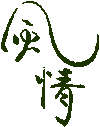semi-multiple trunks
+3
cbobgo
Dendrogeek
john blanchard
7 posters
Page 1 of 1
 semi-multiple trunks
semi-multiple trunks
Hi, can anyone explain why if I'm correct the natural habit of some trees' such as cedrus or sequoia to have some branches that curve upwards and become almost as well developed as the trunk and have their own canopy sometimes almost as high as the main canopy never seem to be translated or copied into bonsai. Is there a rule as to healthy growth pattern that discourages this kind of styling or is it aesthetics? Running with the idea of creating miniature trees' rather than creating bonsai why do I never see this done.

john blanchard- Member
 Re: semi-multiple trunks
Re: semi-multiple trunks
Hi John.
If I am not mistaken, you are referring to "clump style" when it is translated into bonsai.
regards,
jun
If I am not mistaken, you are referring to "clump style" when it is translated into bonsai.
regards,
jun
Guest- Guest
 reply
reply
You have the idea but I mean on tall formal or slight informal uprights. Like you would see on wild old redwoods or cedars. Maybe a chandelier styling.

john blanchard- Member
 Re: semi-multiple trunks
Re: semi-multiple trunks
Walter Pall has referred to this as the "Candelabra" form/style. I have seen trees styled like that, but it certainly has not caught on very widespread.
- bob
- bob

cbobgo- Member
 Kitayama/daisugi : Candelabra, Chandelier
Kitayama/daisugi : Candelabra, Chandelier
john blanchard wrote:You have the idea but I mean on tall formal or slight informal uprights. Like you would see on wild old redwoods or cedars. Maybe a chandelier styling.
When one is referring to Japan: bonsai, niwaki, forestry, architecture, landscape architecture, this manner of tree manipulation is called 'kitayama daisugi' from the Kitayama mountains outside of Kyoto, and in the last century referred to as 'daisugi'; Kitayama ringyo.
And there are specialty export daisugi (dai= base / ancestor) bonsai available.
The technique predates bonsai to a time wherein straight logs were needed for construction. Some of these logs now sell for over half a million yen when formed with metal with shapes, that cause the fibre shapes to be grown directly into the wood in relief, showing up when the bark has been peeled. These trees are the basis for the sukiya style of architecture.
-- every tokonoma has one of these logs... they are very well known in tea circles.
The art of daisugi is as old as man and falls into the same class of associated meaning as the tied knot aerial roots of Kumamoto that indicate a boundary marker. In the mountains one is careful not to trespass where one sees cultivation, this being one of the oldest Fight or Flight triggers that we are hard-wired with. And the same reason we are attracted to vertical shapes and 'stand-up' objects to indicate space. Vertical bonsai do the same thing: create excitement, cause a leap in the heartbeat. Few people celebrate the passive powerful bonsai.
Daisugi also have the same shape as the kanji for 'mountain' and 'forest', and as a result, to see a Kitayama daisugi in a setting, and a garden is a container, seeing the tree, knowing the origin, understanding the kanji, indicates that one should understand that 'to see with my eyes' (mitate), you are in the mountains. This sense of 'seeing with my eyes' is apparently no longer used as a further refinement of bonsai today.
Why are they not included in NA bonsai?
Perhaps daisugi are a forgotten form today, even as Fiona's juniper is a traditional 'flame style' though she never mentioned it, and if she decides on how many tiers it will have as per her virtual, might reference the 'sorin', crown or jewel, mandala.
I mention this perhaps intentional oversight, because my best guess from what I can gather roaming around the archives of IBC, North American bonsai were, in the end result, reinvented as American ideals without the original kata baseline understanding that a bonsai needs to be 'based on a cultural understanding', even though, an unrefined shrub in a pot, one not brought to a beautiful form, is not 'understood' as a bonsai.
It seems that the manipulation is the key rather than the beauty of natural form personified. One no longer 'sees with the artist's intent' but rather 'looks at' a bonsai and judges accordingly.
And, perhaps as a result, the natural form of daisugi are present in the bonsai of Europe as a natural progression of many species from cedar through yew, pine and spruce. And the natural form is not seen in North American trees excepting the west coast. But they are in Japanese bonsai and are not an aberration, rather a beautified form with purpose, of what nature does naturally... Ginkgo is a natural, even Buxus and Cotoneaster have the daisugi form. (also daisugi x flame form).
and curiously; therefore surprisingly not in use, Kitayama daisugi actually personifies everything that North American bonsai are: the art of manipulation and natural tendency with more weight on the manipulation than the tendency. And culturally we have 2x4 milled lumber instead of round natural lumber, such as the early european housing based on the 'cruck'. Though, we should be aware of the need for natural straight strong teepee poles: aka Lodgepole Pine. And Lodgepole do follow the daisugi form, as do spruce, hemlock... larch.
(and... there does seem to be a major push to 'create the tree 'I want' ' rather than the ideal of following the request of the tree, that seems obviated in these latter decades. Likely.. the 'inverse taper' police would be apoplectic from a lack of understanding human + tree culture..
some links:
http://kyoto-shugi.org/
http://openkyoto.com/product/kitayama-sugi-handcarved-chopsticks.html
https://www.youtube.com/watch?v=iOWWEnj8jgU
thanks for reading... .. edzard

fuzei- Member
 Re: semi-multiple trunks
Re: semi-multiple trunks
fuzei wrote: Perhaps daisugi are a forgotten form today, even as Fiona's juniper is a traditional 'flame style' though she never mentioned it, and if she decides on how many tiers it will have as per her virtual, might reference the 'sorin', crown or jewel, mandala. .. edzard
What tree is being referenced here please?

fiona- Member
 Re: semi-multiple trunks
Re: semi-multiple trunks
Thank you for posting! One more piece of knowledge for me!fuzei wrote: ... ...thanks for reading... ...

my nellie- Member
 Re: semi-multiple trunks
Re: semi-multiple trunks
Images of daisugi cryptomeria here on Jake Hobson's site.
http://www.niwaki.com/blog/2012/01/02/dai-sugi/
http://www.niwaki.com/blog/2012/01/02/dai-sugi/
Justin_- Member
 correction
correction
fiona wrote:fuzei wrote: Perhaps daisugi are a forgotten form today, even as Fiona's juniper is a traditional 'flame style' though she never mentioned it, and if she decides on how many tiers it will have as per her virtual, might reference the 'sorin', crown or jewel, mandala. .. edzard
What tree is being referenced here please?
Fiona, indeed, my apologies, I crossed wires & transposed names through images on the 'beauty of line' area of research in Archives when the daisugi post was posted, and transmuted Dorothy's Torulosa project with your work. I was observing rather than dissecting and your works resonate to (with?) each other: at certain points of development the spatial and movement techniques cross over, forming a beauty of line, and subsequently the expressions of your collective works resonate or one could say the harmonics echo.
https://ibonsaiclub.forumotion.com/t1662-torulosa-juniper
again, my apologies to you both for inaccurate referencing, and my thanks for creating the opportunity to correct the lapse.
edzard

fuzei- Member
 Similar topics
Similar topics» Multiple phoenix/tanuki grafts on juniper?
» Multiple styles in one bonsai??
» Multiple Air layers on tree
» Thickening trunks
» How to shape multiple Jade in one container?
» Multiple styles in one bonsai??
» Multiple Air layers on tree
» Thickening trunks
» How to shape multiple Jade in one container?
Page 1 of 1
Permissions in this forum:
You cannot reply to topics in this forum






